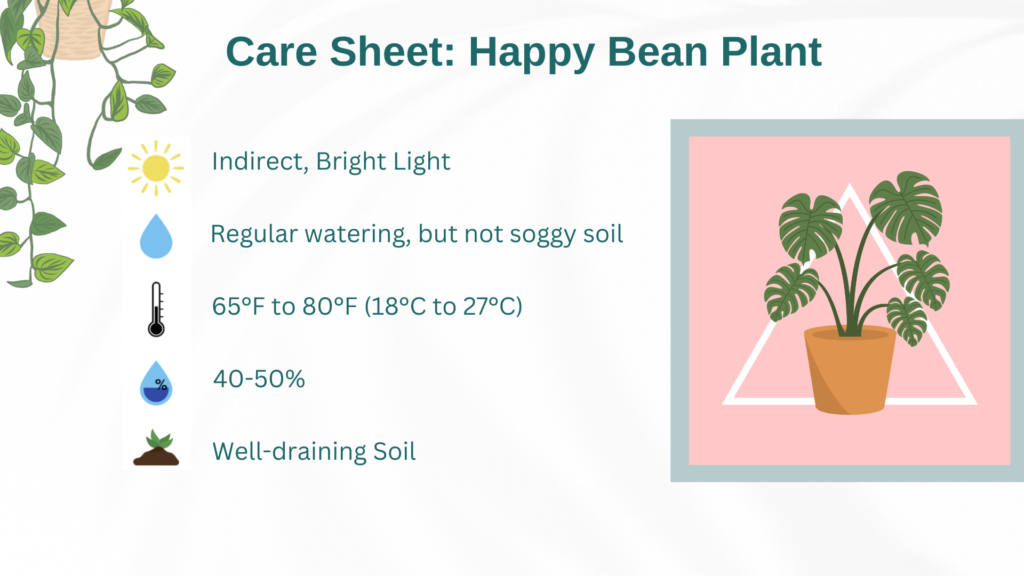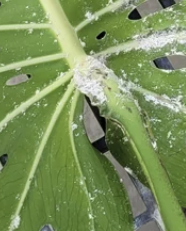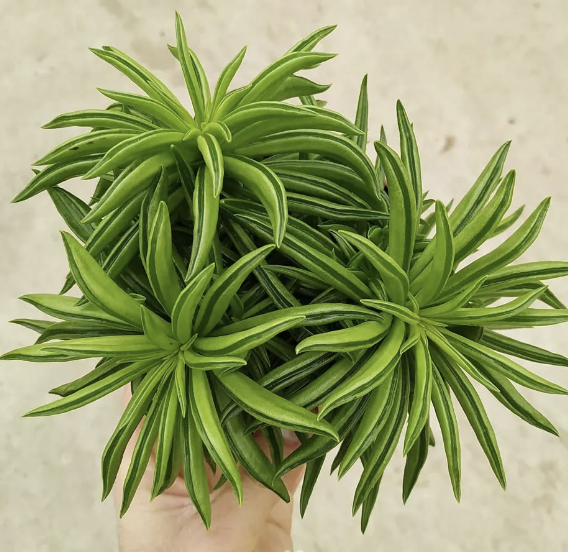If you’re looking to add a unique, easy-care, wonderful houseplant to your indoor plants collection, the Happy Bean, or Peperomia ferreyrae, is a wonderful choice!
This epiphytic house plant gets its cheerful name due to the unique appearance of its leaves. These bean-like, lime-green leaves resemble small green beans, which gives it a playful look that many people find uplifting and decorative in their indoor spaces.
Originating from the lush rainforests of South America, the Happy Bean is a semi-succulent plant, meaning it’s built to thrive with minimal fuss.
Here you’ll find everything you need to know about Happy Bean plant care to keep your green bean peperomia looking fresh and healthy!
Size
Happy Bean plants tend to stay small, usually reaching an ultimate height of about 10-12 inches. With its compact, bushy growth habit, this peperomia is a good choice for a decorative pot or as a tabletop houseplant. The slow-growing succulent structure of the Happy Bean makes it perfect for smaller spaces, and it’s easily adaptable to many different spots in your home.
Care

Light
Happy Bean plants love indirect, bright light, so not too much sun for this one.
They can tolerate some direct sunlight but are best kept out of harsh, direct sun as it can burn the bean-like leaves. If you have a south-facing window or a bright east-facing window, your Happy Bean will thrive.
Lower light conditions are okay too, but you might notice slower growth and less vibrant color. Using fluorescent lights or LED grow lights can also help keep your plant happy if natural light is limited.
Water
Happy Bean plants prefer a regular watering routine but hate sitting in soggy soil. I recommend watering when the top inch of soil feels dry. Be cautious not to give them too much water, as this can lead to root rot.
During the summer growing season, they may need a little more frequent watering, but cut back in the winter months when the plant naturally requires less moisture.
Temperature
The Happy Bean enjoys warm temperatures similar to those of its native rainforest environment, so try to keep it between 65-80°F (18-27°C).
Avoid placing it near drafty windows or air vents, as cooler temperatures below 50°F can stress the plant. Normal household conditions work well for Happy Beans, making them a great plant for indoor growing.
Humidity
Being a tropical plant, the Happy Bean appreciates extra humidity. While it can tolerate typical household humidity levels, adding a small humidifier or placing it near a tray of pebbles with water can give it a boost. High humidity helps maintain healthy growth, especially during dry winter months. Aim for 40-50%.
Soil
For the best results, plant your Happy Bean in well-draining soil. A potting mix designed for succulents or epiphytic plants works well, as it allows for good drainage and doesn’t hold excess water. Additions like perlite or cactus soil help keep the mix light and airy. A good potting mix will also prevent water from pooling around the roots, which is crucial for avoiding root rot.
Fertilizer
Happy Bean plants are light feeders, so they don’t require a ton of fertilizing. During the growing season in early spring and summer, feed your plant with a diluted liquid fertilizer every 4-6 weeks. Choose a balanced formula to promote healthy new foliage and lush growth. Avoid over-fertilizing, as too much can damage the plant.
Potting
Happy Beans have a shallow root system, so they don’t need to be repotted often.
However, upgrade to a large pot when they outgrow their current one. Make sure it has drainage holes to allow excess water to escape. Terracotta pots work well because they help wick away moisture, preventing overwatering issues.
Pruning
Pruning isn’t essential for Happy Beans since they maintain a compact shape, but occasional trimming can encourage a fuller appearance. If you notice dead leaves or stems, go ahead and remove them to keep the plant looking neat. Pruning is best done in the late spring or early summer when the plant is actively growing.
Propagation
The Happy Bean can be easily propagated through stem cuttings. Take a healthy cutting with a few leaves, let it dry for a day, and then place it in moist good soil or even directly into water until new roots develop. This is a fun and easy way to get a new plant and share the Happy Bean with friends!
Pests

Although the Happy Bean is generally pest-resistant, keep an eye out for common indoor pests like spider mites and mealybugs. If you spot any, treat the plant with neem oil or rubbing alcohol to prevent the pests from spreading. Regularly wiping down the leaves with a damp cloth can also help keep pests at bay.
Diseases
Root rot is the most common disease affecting the Happy Bean and is almost always due to overwatering. To avoid this, make sure the plant is in well-drained soil and a pot with drainage holes. Also, extra humidity and good air circulation help prevent fungal diseases.
Common Issues
Here are a few typical problems you might encounter:
- Yellow leaves: Usually a sign of too much water or poor drainage. Check the soil moisture and adjust your watering routine.
- Drooping or wilting: Your Happy Bean may not be getting enough water, or it might be too hot or too cold.
- Pale or faded color: This can happen if the plant isn’t receiving enough light. Move it closer to a bright indirect light source, and you’ll likely see improvement.
The Happy Bean, with its cheerful, unique shape and low-maintenance care, is a perfect addition to any plant collection. With the right amount of light, water, and humidity, your Happy Bean will thrive and bring a lush, green touch to your space. Happy planting!

